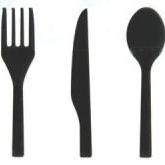-
Welcome to the eG Forums, a service of the eGullet Society for Culinary Arts & Letters. The Society is a 501(c)3 not-for-profit organization dedicated to the advancement of the culinary arts. These advertising-free forums are provided free of charge through donations from Society members. Anyone may read the forums, but to post you must create a free account.
Menus that Mangle foreign Languages
-
Similar Content
-
- 13 replies
- 829 views
-
- 12 replies
- 1,462 views
-
Silly Menus
By liuzhou,
- 6 replies
- 946 views
-
- 5 replies
- 1,144 views
-
Most Expensive Tasting Menus in The US - Maybe Ever? Per Se and Masa Say: Let Them Eat Cake!
By weinoo,
- 7 replies
- 1,539 views
-
-
Recently Browsing 0 members
- No registered users viewing this page.






Recommended Posts